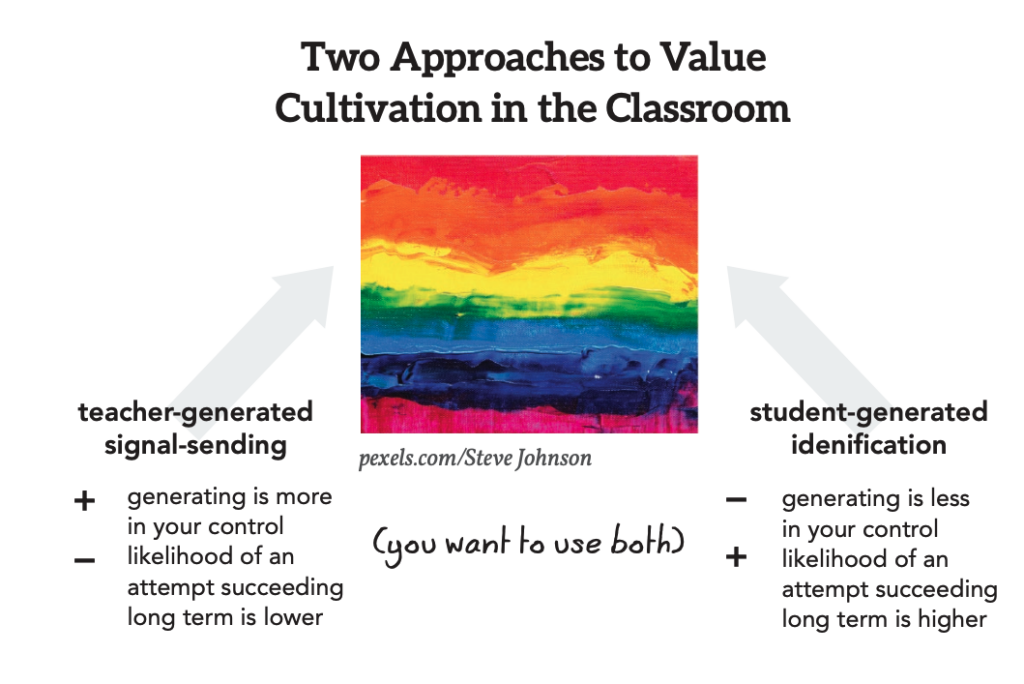Dear colleague,
Mini-sermons are a key move for Value cultivation in the classroom. When a credible teacher takes 30-120 seconds to explain to students in an authentic, creative, and gentle way why the work at hand is valuable AND when the teacher does this on a regular basis, do not underestimate the inner changes produced by such simple-seeming efforts.
But thankfully, this isn't the only tool at our disposal for helping our students value the work of learning. Nor is it the most powerful.
The most powerful method for cultivating Value, in my experience, is a set of moves that I call Valued Within exercises.

A Valued Within exercise is simple: Any time you have students articulate (via writing or speaking) why the work of learning is valuable, that's a Valued Within exercise. And to illustrate this strategy well, I'm going to use the example from the research that first awakened me to the power of this type of activity.
The T-Chart Activity (Or Hulleman et al.'s Utility-Value Intervention)
The activity is very simple:
- Students create a t-chart.
- On one side (Column A), they write down a list of things they value: hobbies, interests, goals, character attributes.
- On the other side (Column B), they write a list of things they have learned or done in class: course concepts, skills, recurring activities, “life skills” you teach in concurrence with coursework.
- Student draw lines between the two columns. I pose it as a problem, like this: “Most people can't connect the things they do in school with the values they have outside of school. I believe that you can do this. Being as creative as you need to be, draw lines between items in Column A and Column B that you believe are connected.”
- Students are then tasked with writing about one line they drew. This template helps: ___________ is connected to _______________ because ________________.
- Finally, students elaborate on what they've written. This is the template I use: ______________ could be important to my life because _____________.

Here's a recording of me doing this with my students recently.
When I do this with my students, I use Think-Pair-Share wherever I sense students need help completing the step. For this exercise to work, you really need students to be successful at each step before moving on. As you guide students through each step, you want to be circulating and checking to see their progress. Once students have five items or more per column, that's when you move on. Less items than that, and they'll have a harder time finding a connection.
What's amazing about this exercise is that, when repeated roughly once per month over the course of the school year, researchers find significant improvements in things like grades, final exam scores, and self-reported interest in the course, and this difference continues beyond the year of the intervention. (For a deep dive into that research, see the related chapter in the Handbook of Wise Interventions.)
What I like about using this is that it doesn't take a ton of class time (especially after the first one to two times when students get used to the challenge, and you only do it once per month or unit). And in that short amount of time, it gets students to work at figuring out why school matters for them. Plus, its evidence base is extensive.

So if you're ready to give this one a shot, I encourage you to do so.
Teaching right beside you,
DSJR
Leave a Reply